Leadership: How to Produce Ideas utilizing Photography
28/02/13 12:00 Filed in: Photography & Art | B2B
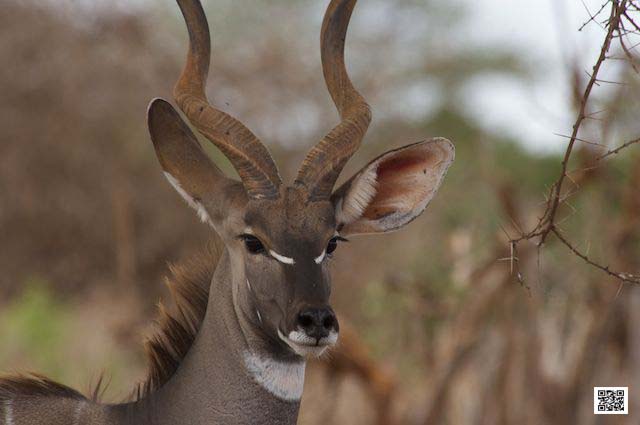
James Webb Young published in 1939 a book with the title “A Technique for Producing Ideas”. He was a cross-disciplinary thinker and his book mentions 5 essential steps how ideas are produced:
All five steps are executed by the brain and at the end an idea rolls out. This process is in its physical being non visible and non physical, because it happens in the maze of our brains. We might visualize material and ideas for ourselves to understand it better, but the images are just in the brain.
That can sometimes be a problem when working in teams to produce ideas. Words cannot explain what the processes in your brain are doing and what you see, and this is the same for every member of the team. Irritation, frustration and misunderstanding are starting to undermine the process and its getting more difficult to come up with the right ideas.
This can be changed. Photography is the all-in-one device for producing ideas. Material is captured in images and by capturing it, it is at the same time digested and already processed by the unconscious. Now all images hang on a wall or are lying on a table. After looking at them for a while the people take pictures of the pictures. One or several of them are the a-ha moment and the moment that the idea meets reality at the same time. An idea was born.
Photography cuts down the process to its essence. By doing that it saves a lot of time and energy, gives leaders quick access to solutions and teams more resources to work with. It works in all sorts of settings like marketing sessions, leadership training, innovation sessions, product development and actually anything one is looking for ideas, also little (or not so little) hassles like how should I present myself in the job interview tomorrow.
Got it? Try it. Enjoy!
Ute Sonnenberg for www.rohoyachui.com
Read more about Webb’s book here.
Mario Testino: In Your Face
27/02/13 11:59 Filed in: Photography & Art

In Your Face is not only the name of fashion photographer Mario Testino’s first ever photo exhibition in the U.S. that took pace at the Museum of Fine Arts in Boston, it is also what his photography really is.
One can recognize his photographs immediately and for my feeling also his Italian descent. The composition, the movement, the beauty, just like energy coming out of the photographs, each one a wonderful piece of fine art photography. They somehow grab you and won’t let go anymore and that’s what art is about. You keep looking at them.
In your face or rather in your heart, that’s what a photo does, all photos do and what photography courses should teach the students, that their photographs touch hearts and mesmerize minds and turn into art.
Keep going, snapping and having fun!
Ute Sonnenberg for www.rohoyachui.com
Do we need Fotobars?
26/02/13 11:58 Filed in: Photography & Art

Polaroid has just opened its first Fotobar retail store in Florida to be followed by more stores in major cities in the US. People can go there and upload their Instagram or Facebook photos to a workstation, edit them and order prints with the choice of several print materials and frames.
I thought photography-loving people are doing that anyway already from home. Upload images, edit and order prints online, if they want their art to be a nice present or for their own home. For what reason a store to go to and do it instead of easily at home?
I don’t know. There must be some deeper reason behind the store idea that is only known to the Polaroid people. The good thing is that these stores also offer space for photography courses, to display art and for private parties.
Maybe the parties will be the actual business there
Ute Sonnenberg for www.rohoyachui.com
Noam Chomsky: What Passion Can Do
25/02/13 11:56 Filed in: Photography & Art

Noam Chomsky the renowned American linguist turned 84 in December last year and he seems to be as active as always, Gary Marcus is writing for the New Yorker. A man full of passion for what he is doing, not tiring even at an advanced age, an example for all who are about to make choices in their life and the path of passion is one of the options.
No matter if language, photography or music is your passion, when you really love it, follow its call. It might feel frightening and the mind might be full of doubt, but trust your intuition and all will fall into place. Remember also Steve Jobs words, that you better do what you love to do when times get tough, otherwise you will not succeed.
Big words and deep in our heart we know they are true, but one still got to do it. Maybe the example of this inspiring personality can be a motivation and assurance that it really works.
Follow your heart and enjoy your passion!
Ute Sonnenberg for www.rohoyachui.com
ePhoto Book: El Sentimiento
24/02/13 11:55 Filed in: Photography & Art

Spain is a beautiful country and Andalusia is magic. It is a place of great emotions, history, nature, people, beauty and horses. Traveling for photography is such an amazing experience. It gets to the photographer and to the subject as well and it creates memorable images of special journeys.
El Sentimiento is a photo book about Andalusia, a journey to special places.
Enjoy! View the book here.
Ute Sonnenberg for www.rohoyachui.com
On Photo Safari: Sunset and Sunrise
23/02/13 11:53 Filed in: Photo Safari | Photography & Art

The moment the sun appears on the horizon and the moment the sun disappears on the horizon are magical moments of a photographic safari. Sunrise and sunset are the moments we love to capture, but sometimes they are also the moments that frustrate us the most when the image is not what we wanted it to be.
Photography courses teach us about contrasts and that we need them for great images and that applies to sunrises and sunsets as well. The best sunsets and sunrises are the ones with clouds. The sun (the light) needs something to shine on to be seen and clouds are ideal. They become the carrier of the sunlight and the light can display its amazing colors that make the event so mesmerizing.
Another great “tool” to create a beautiful sunset photo are trees. That makes photographic safaris in the Masai Mara so fascinating with their single umbrella trees dotted over the Great Plains. The sun setting behind such a tree is just amazing.
But what works in the bush works also at home. No matter if you are in a big city or in the countryside, choose a spot where the sun can shine on something, a cloud, a tree, a building, a person or on water. As long as there is a medium to carry the light, you can create great pictures.
Seeing it already in front of you? Try it and enjoy the magical moment.
Ute Sonnenberg for www.rohoyachui.com
How Management Teams can Benefit from Photography
22/02/13 12:54 Filed in: B2B

Communication can be a challenge even when all speak the same language, work in the same team and on the same project. Misunderstandings occur constantly, because words are the poorest kind of communication. Body language is telling already more than words, but how to communicate business information through body language? Pretty much impossible, but probably looking quite intriguing when watching people trying it. What else can be used? Well images, visualizations and photographs are an amazing tool to communicate without misunderstandings.
It works for families and it works for management teams. The wife is looking for a new kitchen. She goes to different stores and from the kitchens she likes she takes a photo with her smart phone. At home she shows it to her husband and together they make a choice which what kitchen to proceed. It would have been impossible for her to explain her husband with words how the kitchens look like. He would have created images in his mind not matching the actual kitchen, but with the images it was clear immediately.
The same process works for business teams even if the subject is a situation within a team. Everything can be visualized and captured in photographs. Teams start understanding each other and misunderstandings become rare. Energy and time is saved, no endless and tiring discussions with no result, time is used efficiently and clear results offer solutions not more problems.
Photography for business is a strong tool and it is the future.
The future is now.
Ute Sonnenberg for www.rohoyachui.com
How to Use Intuition in Photography
21/02/13 12:53 Filed in: Photography & Art

It is most likely an open door to say that intuition is the heart of photography, but it’s sometimes good to have a reminder.
Where the ones are who easily enjoy intuition and photographic heights there are also the others who get lost in technical details. Not that the technical side of photography does not involve intuition, but it is mostly the arty part that requires it for compositions with light.
Photography courses pay attention to composition and working with light, explaining the rule of thirds, but might not explicitly mention the important role of intuition in this process or just assume that photographers are using it anyway, which is partly true. So, how can a photographer consciously utilize intuition to create great images? Very simple, by following the light. The light does not only determine the camera settings it also creates the compositions. And if you struggle seeing compositions just look out for the light, what it’s pointing out for you and right there it is, the composition you were looking for.
One might think, but this is just looking for the light and got nothing to do with intuition, but this is not quite true. Intuitively we are looking for the light and it goes wrong with our images when we try to ignore what the intuition is telling us. Imagine you are out in the bush on photo safari. It is about 9 am and the best light is already gone. Now the light is bright and harsh. You remember what you learned and you try to photograph with the light, but your images look dull. Suddenly you have the feeling to turn around and photograph into the light and yes, there are still contrasts and your images look much better. So, most likely not consciously you followed a feeling triggered by the light and you got it working. And this is just one small example how intuition can make a day photographing in the bush a great one.
Inspired? Try it and enjoy snapping!
Ute Sonnenberg for www.rohoyachui.com
How Your Camera is Your Grounding
20/02/13 12:52 Filed in: Photography & Art

It might sound a bit spiritual when talking about grounding, but well photography is something that takes you to high spirits and in order to not get lost up there, grounding is very important.
Do you know of these moments of frustration when you tried to photograph something and your camera didn’t do what you thought it should do? In those moments unfortunately very often not the camera is the problem, but the photographer. Your camera only brings you back into reality and tells you that it needs light to see and focus, just as your eyes, but you had just forgotten, because it looked so great.
Your camera gear makes sure you stay in touch with the reality of the environment you are shooting in. It tells you through the images what’s going on and even includes advise what to do to make it work. One just got to see and listen. Well that sounds easy, but it is not. You got to know your camera to understand what it’s telling you. So a photography course with the basics can do no harm. Better to learn how to operate your camera at home than missing great shots while traveling or when being on photographic safaris. Imagine a lion kill and you don’t get it right.
Ground yourself in photography and learn about your camera. A good grounding is the solid base for soring in photographic heights.
Happy snapping!
Ute Sonnenberg for www.rohoyachui.com
Photo Safari: Hunting Banned in Botswana
19/02/13 12:50 Filed in: Photo Safari
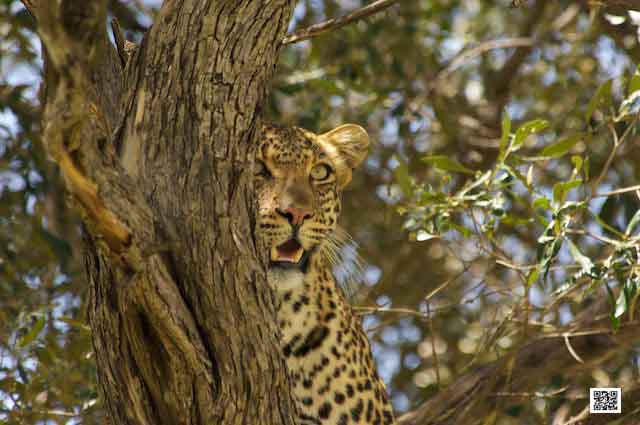
In November 2012 Botswana’s President Ian Khama, gave a speech wherein he announced that by the end of 2013 trophy hunting would no longer be allow allowed in Botswana. He said that "Next year will be the last time anyone is allowed to hunt in Botswana and we have realized that if we do not take care of our animals, we will have a huge problem in terms of tourism."
Great. Photography won from trophy hunting. Photo safari won from hunting safari and it was about time. The number of lion had dropped dramatically and other animals like leopard and elephant were also only to often licensed to be killed. But the peaceful adventure of photographic safaris and the worldwide photography enthusiasm of billions of photographers had turned the table on the hunt. Photography has become a peaceful force of conservation. Cameras replace the rifle and the animals stay alive. The photographer goes home with great image-trophies and
And other countries seem to follow Botswana’s example. Zambia has banned trophy hunt, but so far temporarily and Zimbabwe is considering doing the same until final decisions are made. The fine print of the Botswana ban on hunt is not known yet, but it is a major step in the right direction.
Thanks to eco tourism and photography lovers wildlife is preserved. Photography has become a movement.
Keep moving!
Ute Sonnenberg for www.rohoyachui.com
Cindy Sherman: Self-Portrait of a Woman
18/02/13 09:33 Filed in: Photography & Art

Who is Cindy Sherman?
Cindy Sherman is a photographer, a very successful photographer with a unique style. She steps in front of the camera and takes self-portraits, yet it’s hard to know how she looks like, because she transforms into stereotypes of women in everyday situations, yet the women are not Cindy Sherman, or are they?
There is always the photographer in the picture, if he/she stands in front of the camera for a self-portrait or behind the camera, the photographers energy is there and therefore the images carry a photographers signature … even if hey are not signed.
Cindy Sherman is a remarkable person and photographer as her images show and art collectors seem to love it. The image above called “Untitled #96” was sold in May 2011 for USD 3.8 million.
Maybe the secret of her photography’s success is the mystery of who is Cindy Sherman? that every image seems to ask.
Read more about her in Phoblographer.
Ute Sonnenberg for www.rohoyachui.com
ePhoto Book: L'Amour Provence
17/02/13 09:32 Filed in: Photography & Art

The Provence is probably the most beautiful part of France.
Enjoy a photographic journey through this intriguing region of stunning nature, traditions, people and the horses of the Camargue.
Be inspired. View the book here.
Ute Sonnenberg for www.rohoyachui.com
On Photo Safari: The Photographer
16/02/13 09:30 Filed in: Photo Safari
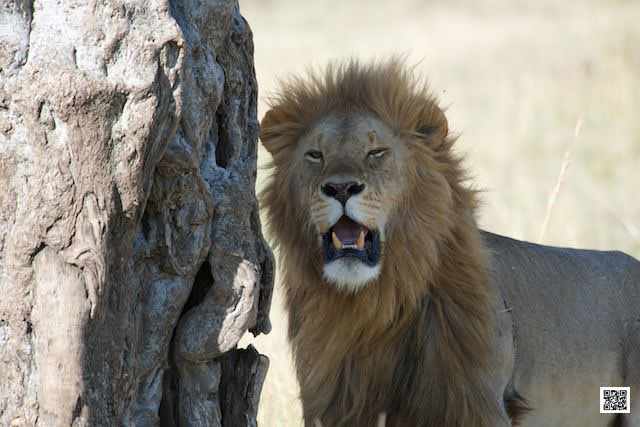
There is lots of attention for camera gear when being on a photographic safari, what lens to bring what settings to use, but there is an essential factor that is often forgotten, the photographer and I don’t mean the ability of the photographer to operate the camera, its something more subtle.
Photo safaris take the guests out on open 4x4 jeeps (strongly recommended to go to places where they are doing it like that and with only 6 people on the vehicle). That means there are two people in a row and if you are lucky you got a row for yourself. Experience from wildlife photography courses taught that it proofed to be hard to get the photographer moving in his/her row, really moving not only leaning over. Wildlife can be on either side of the vehicle or move to the other side of the vehicle and in order to get the best shots the photographer should move too, but often is glued to the spot.
How is this possible? Think of yourself how often you were standing on a spot photographing a scene and getting annoyed that people were walking somewhere on the side or other obstacles suddenly turned up. Did you think of moving yourself to a different spot to get the good shot? One reason to not move is the composition we see just there, but there is more, especially in the bush or other challenging environments. We are feeling comfortable and we like to keep it like that, moving seems then uncomfortable and we resist, stick to where we are and don’t move.
But this is just the point, one got to be willing to move/change in order to get great results and discover different perspectives. Photography is also a physical activity and means physical efforts for the photographer, although its tempting to forget about that, but its crucial.
Keep moving! Keep having fun!
Ute Sonnenberg for www.rohoyachui.com
How Intuition drives Photography
15/02/13 09:29 Filed in: Intuition | Photography & Art

What is intuition? When you know that you got to go to the park today to get the best pics of the swans or that you move just a bit more further to get the better composition of the house or that you just know that you will see a lion today on your photographic safari. You just know, your gut feeling tells you and it always proofs to be right, doesn’t it?
Where would we be in photography without our gut feeling? Would we even go on photographic journeys or to photography courses without it? What makes us creating art? Isn’t it all intuition, our gut feeling?
When do we have success in art and photography? It is the image that you very clearly remember taking in a split of a second and something made you taking it. And you love the image forever, isn’t it that way?
Trust your intuition and keep going.
Happy snapping!
Ute Sonnenberg for www.rohoyachui.com
How Photography will be the Innovation Tool of the Future
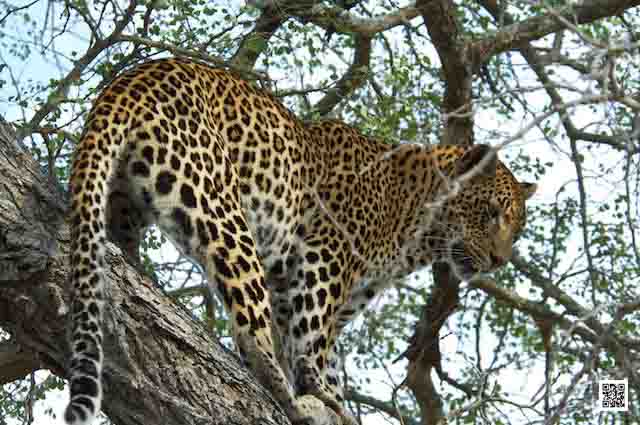
At the time that quantum physics was evolving and the scientists were wondering what the discoveries they made would mean for humanity, one of them, David Bohm, started collaborating with Martin Buber, the Austrian philosopher. Bohm wanted to find answers in philosophy how discoveries like “everything is made of the same energy” and “everything is connected to everything else” explain the universe and our role in it. He worked with Buber on his book “I and Thou”, yet he realized that he didn’t find all answers he was looking for. David Bohm concluded that it needs the arts to find comprehensive answers, that it would need the triangle quantum physics, philosophy and art to answer the questions of the universe.
The answers he was looking for might be on their way. Back in his time art was something few people did; nowadays art is something billions do. With a camera in every cell phone pretty much everyone is doing art through photography. It doesn’t need any photography course to wield this amazing tool, one only needs to press the shutter and it goes. By having a broad majority of people doing it, photography has become the connecting art, producing images and answers continuously.
Now, one only needs to learn to read the images to find the answers, connecting quantum physics, philosophy and art in an innovative synergy to conquer the challenges of leadership and life. Visualizing quantum physics and philosophy is innovation at its best, unique, powerful and ready to serve humanity. Next to numerous possible scientific and everyday life applications, photography becomes the key to continuous success in business.
Photography is what David Bohm was looking for. His intuition was right, that the arts were the link.
Ute Sonnenberg for www.rohoyachui.com
Eames: Power of 10 - An Art Project
13/02/13 09:27 Filed in: Photography & Art

In 1977 Ray and Charles Eames created the incredible video Powers of 10 and unfolded for the viewer the gigantic dimensions from the universe on the widest scale to the inside depth of a cell on the smallest scale. This iconic video sparked 40 artists to create a 21st century version, each artist creating a segment in his/her own way.
The project is close to conclusion and promising a very inspiring result. Its going to be interesting what innovative approach was chosen by each artist and what role photography is playing in the result. It must be in, no question, but how and how can the project be used in art classes and photography courses, what will it contribute to photography and what will it teach photographers.
Read more about the powers project here. Watch the iconic video from 1977 here.
Be inspired!
Ute Sonnenberg for www.rohoyachui.com
Carl Zeiss Lenses - A Treasure Passed On
12/02/13 09:24 Filed in: Photography & Art

Carl Zeiss Jena, this magical company of incredible camera lenses in the middle of Germany, surrounded by beautiful forests and touched by the arty spirit of Weimar, where Geothe, Schiller, Liszt and Bauhaus had their home. Their lenses must be magic.
And they are. One of the very famous camera lenses made by Carl Zeiss is the famous Planar 50mm f/0.7, used by Stanley Kubrick in Barry Lyndon, designed by Dr. Erhard Glatzel. Dr. Glatzel passed away and his grandson inherited his camera bag, with a content no camera bag in the world has and with a big surprise.
There where suddenly two lenses that nobody knew about, the Distagon 25mm f/1.4 and the Distagon 18mm f/2.8. They are prototypes and never went into production. Example images can be seen on the original forum post and images of more lenses are available via PetaPixel.
Well, the lenses are not very practical on photo safari, but it would be just amazing to work with them during photography courses to see their magnificent qualities in the challenging light of the bush. Maybe one day the grandson will take them there to give it a try, who knows.
Anyway, its great that there are still surprises in camera gear and special lenses evolve from somewhere.
Keep enjoying photography and maybe have a look into old boxes on the attic, a surprise could be waiting there for you.
Happy snapping!
Ute Sonnenberg for www.rohoyachui.com
How to Learn from Manuel Rivera-Ortiz
11/02/13 09:22 Filed in: Photography & Art
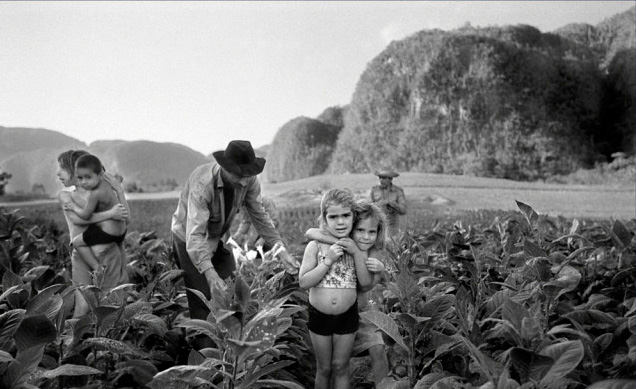
Manuel Rivera-Ortiz is a photographer known for it’s intriguing documentary style photography one connects with the Magnum Photographers.
He was born in Puerto Rico and came with his father and siblings to the United States when he was still very young. Rivera-Ortiz was a good student and worked for years as a journalist for newspapers. Not that long ago he caught the photography bug and since then he inspires with his fine art photography work to address social issues with the camera in a beautiful way.
Rivera-Ortiz only surrendered to photography in 2001 and in 2010 he started the Manuel Rivera-Ortiz Foundation for Documentary Photography and Film, what a wonderful success story.
What does that teach us? Live your dream.
Ute Sonnenberg for www.rohoyachui.com
ePhoto Book: Leopard Land
10/02/13 09:18 Filed in: Photography & Art
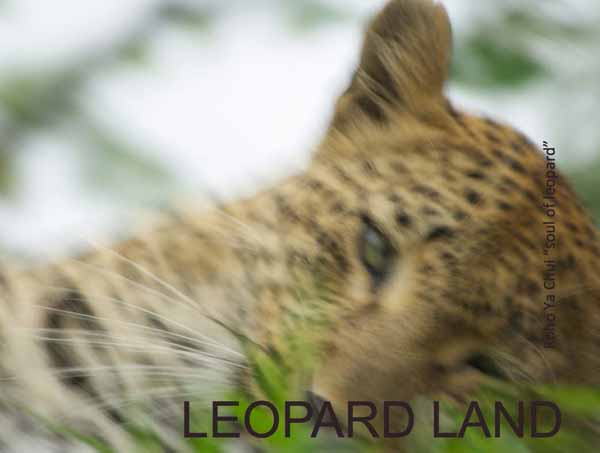
It is a place like in a fairy tail, yet it is real, leopard land. This place in the South African bush is heaven for photographers, wildlife lovers and an ideal destination for photographic safaris.
Curious? Have a look here.
Ute Sonnenberg for www.rohoyachui.com
On Photo Safari: The Beanbag
09/02/13 09:17 Filed in: Photo Tips

The beanbag is an item made of fabric, looking like a small pillowcase, and is filled with beans, at least it was.
Nowadays beanbags can be filled with rice or lighter synthetic fillings and can have several shapes. There are beanbags that stay nicely on the sill of car windows on metal bars in safari vehicles or on the knee of the photographer. They are multifunctional and extremely helpful on photo safari.
We photographers are not able to hold our camera (with or without zoom lens) steady enough to create shake-less images. We need help. For night photography it has to be the tripod, but on photographic safaris the tripod is not very practical. The beanbag is much better. You can put it everywhere, it keeps you completely flexible and mobile and the images will be sharp. Just rest the camera lens on the beanbag and shoot away. Well, we seem to like to have control about our camera and it is always an item during the photography courses that it is difficult for us to let go and trust the beanbag, but we can. The beanbag is doing the job just great. Try it. It works perfectly.
Beanbags can be bought in all sizes and shapes. They are also easy do be made at home from a small pillowcase or a piece of clothe.
Happy beanbagging!
Ute Sonnenberg for www.rohoyachui.com
How Intuition Training Helps
08/02/13 08:32 Filed in: Insights & Opinion | Intuition
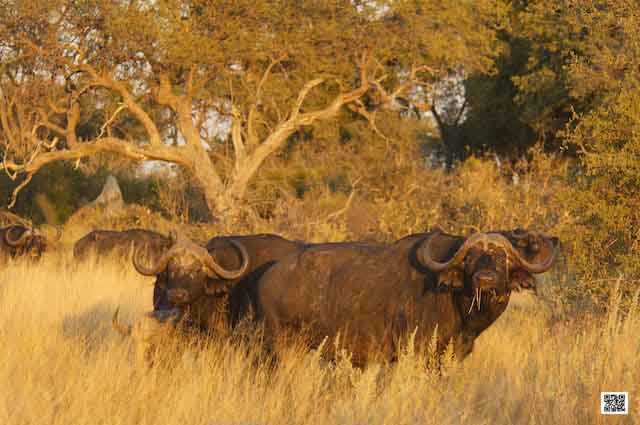
Being a leader in business is a lot about spreadsheets, meetings, challenging decisions, guiding and success, yet it is also is a lot about intuition. Intuition is even an essential part of leadership and the most charismatic leaders like Steve Jobs work(ed) consciously with what intuition tells them. But how do they know that the information is genuine and not noise steering them in the wrong direction?
Some of them learn by doing, taking every now and then the wrong turn and go back onto the path, knowing better next time. Others turn to psychics to get confirmation of what they sense themselves. But there is another way of learning to utilize intuition and being able to get trustworthy information. The reliable tool is photography.
Photography visualizes and materializes what intuition as something on the non-visual and non-physical energy (or intuition) level offers us as enormous information resources. One learns how to tap into this information resource and extract the information needed for a certain business task. Photography is the easy accessible tool to do that; one needs only learn how to use it.
Intuition training helps with that. It works like an incubator and allows within a short, yet intense session to get the basics and to apply the learned immediately in daily work and life. It might sound in the first place like a photo safari with photography course, but this is only how it appears at first. It is an amazing process of gaining access to the immense resources of the intuition level, ready waiting there for us to use them.
Sounds a bit vague? Possibly it does, but it is not, it is very real and we are using it everyday mostly unconsciously. Got a gut feeling?
Ute Sonnenberg for www.rohoyachhui.com
Don McCullin: Photographing Hard to Face Reality
07/02/13 08:29 Filed in: Photography & Art

How must it be to be Don Mccullin, photographing hard to face reality, capturing iconic images that go under the skin and stick with you for life? Don Mccullin reflected earlier on how it is to have a photography career filled with haunting images and now there is the documentary “McCullin” with insights on his life as a war photographer. Have a look at the official trailer here.
Can a photographer learn to do what he did? Can a photography course prepare the students for what they need to do this work? Maybe not. Maybe there is not even a photography course that can prepare one for what one might see on photo safari during the Great Migration in the Masai Mara, yet we manage when facing these moments of life and death. Maybe the camera helps to create a distance and at the same time to capture the moment in all its dimensions. We can give what we saw a place and that makes it bearable, although the moment is captured forever in the picture and in us.
Ute Sonnenberg for www.rohoyachui.com
Photography: Camera Gear's Worth Life
06/02/13 08:28 Filed in: Photography & Art | Photo Tips

What are you? An early adapter or rather waiting and see what happens? It is easy to be carried away on the hype over a new camera model or fantastic new gadgets of camera gear. Photography offers so many opportunities to play and one just wants to have the thing everybody is raving about. But does that make sense? Or rather doesn’t that hurt your wallet?
Have a look on what Roger Cicala has put into a graph about the worth of camera gear during its lifetime:
“For several years now, my occupation has been to basically read everything written about new equipment. In order to help everyone save time, and to save the Internet millions of electrons, I have developed a concise method to summarize all such discussions for all newly introduced imaging equipment.
I modestly call this Roger’s Law of New Product Introduction and have summarized it in the graph above. You will notice there are two possible paths a new product may follow. To date, these two paths accurately describe every introduced product. It is possible, depending upon which forums you visit, that a product follows both paths simultaneously – for example a new Canon camera will often follow path A on a Canon board, while following path B on a Nikon board. I suggest we refer to this as The Fanboy Uncertainty Principle.” (via PetaPixel)
So, maybe next time something exciting new comes out we wait a bit. It will give a better idea what the new camera can do and will be friendlier for our wallet. And if you are desperate to take it with you to the next photography course or on photographic safari, check if you can rent one and decide later.
Happy snapping!
Ute Sonnenberg for www.rohoyachui.com
Annie Leibovitz Vogue Photo Shoot: Newsjacking gone too far?
05/02/13 08:26 Filed in: Photography & Art

Annie Leibovitz’s recent fashion photo shoot for Vogue stirred anger and irritation among the Vogue readers. The photo shoot shows models posing with rescue workers of super storm Sandy. Vogue’s intention was to put a spotlight on these important people who did great work during the disaster Sandy brought onto the Eastern coast, but it might be tempting to see a clever newsjacking by Vogue to put a spotlight on the magazine. Was it?
Maybe it was, nonetheless it brought people into the picture who deserve acknowledgement for their great work and having a famous photographer like Annie Leibovitz doing the shoot, adds even art to it.
So, maybe it is a nice idea to integrate photographing people who do great work for the community into our everyday snapping or into photography courses we attend.
Lets take the positive from this fashion photo shoot and let it go viral to honor caring people.
Ute Sonnenberg for www.rohoyachui.com
Be Fast: New York Times MIght Review Your Photography
04/02/13 08:24 Filed in: Photography & Art
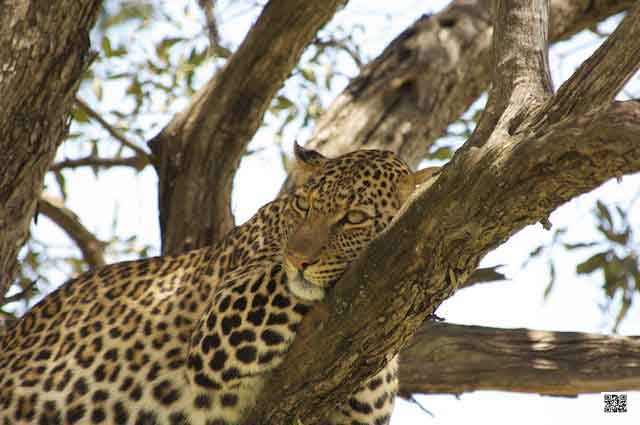
How would it be to have your photography portfolio reviewed by probably the most influential newspaper in the world? Scary?
Yes, most likely, but it would be great, wouldn’t it? Now is the chance that this can happen. If you think you don’t have yet the portfolio you could show them, get your camera and go quickly, maybe a speed photography course as well, some advise what the journalists might like to see (probably not the lion from the photographic safari … but who knows), probably some though moments of choices to be made and here you go. As long as you submit your work before the 13th of February you are in and stand a chance to get reviewed by the New York Times.
Click for the details of the professional portfolio review here and sign up on their application page.
All the best and good luck!
Ute Sonnenberg for www.rohoyachui.com
ePhoto Book: At the Edge of Light
03/02/13 08:54 Filed in: Photography & Art

Being on a photographic safari can teach one sometimes more than simply photography. A photography course might bring one to see more than only a wildlife sighting and sometimes the impressions are deep and make one think about life.
Travelling to the Masai Mara can be traveling into the essence of creativity, stimulating whole new insights.
See what a zebra can tell.
View & download ephoto book here.
Ute Sonnenberg for www.rohoyachui.com
On Photo Safari: Tripod vs. Monopod
02/02/13 08:52 Filed in: Photo Tips

Choosing the right equipment when going on photo safari can be difficult, especially when one has several cameras, lenses and accessories. First it depends on the mode of travel during the photographic safari. Travel by road gives usually no limits regarding the luggage and enough space to bring what you have. Flying is different. The small safari aircrafts have strict baggage allowances, usually 15 kg including hand luggage and photo equipment. Well, a camera body and a zoom lens are easily already 5 kg.
When it comes to accessories photographers are often doubtful, if they should bring a tripod or not. A tripod is nice when you want to do low light photography and night shots, but it needs space. On the safari vehicle is little space to set up your tripod and the tripod will constantly be in the way. And you cannot get out of the vehicle to set it up when photographing animals. It is actually not a good idea to bring one. You better bring a monopod. A monopod is lighter, easier to carry, needs less to no space and can help when wielding a big lens. It is not ideal when wanting to do night shots, because you are still holing it yourself, but if you are not keen on night shots, rather bring a monopod than a tripod.
Happy adventurous snapping!
Ute Sonnenberg for www.rohoyachui.com
How Photography can Help Teams
01/02/13 08:51 Filed in: B2B
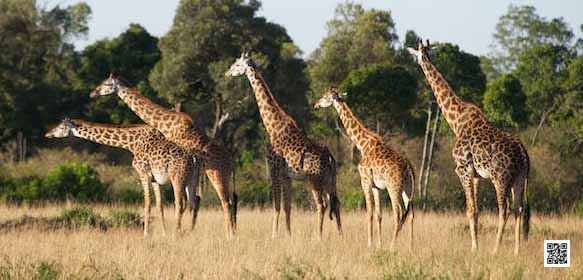
Working in teams is a great thing, yet it comes with challenges too. Different personalities, different backgrounds, different ideas, different ways to work and all working for the same goal, friction must be unavoidable.
Friction has a stimulating aspect, but mostly it means loss of energy resulting in inefficiency and unhappiness of the team members. Such a process can develop unnoticed for quite a while and when it actually comes to surface it can be a difficult task to identify the core of the problem and to solve it, because emotions might be high up already and blur the view.
In these situations photography can be a very useful and insightful tool. It can be part of team building sessions, business coaching or leadership training. Using photography brings play into the situation, fun and joy. And it visualizes the issues the team wants to address. What no one can say an image can show. The intuition (or the unconscious) speaks and what emotions blurred, the eye now can see.
If the team chooses to do sessions in a nature environment like e.g. as part of a photographic safari or embedded in a wildlife photography course, nature will be a stimulating environment to open up and enjoy the process, away from the usual environment with all the good nature has to offer. Yet, the key to seeing is the photography, no matter in what environment. Photography is the pleasant that allows easy access to instant insights.
Try it.
Ute Sonnenberg for www.rohoyachui.com
